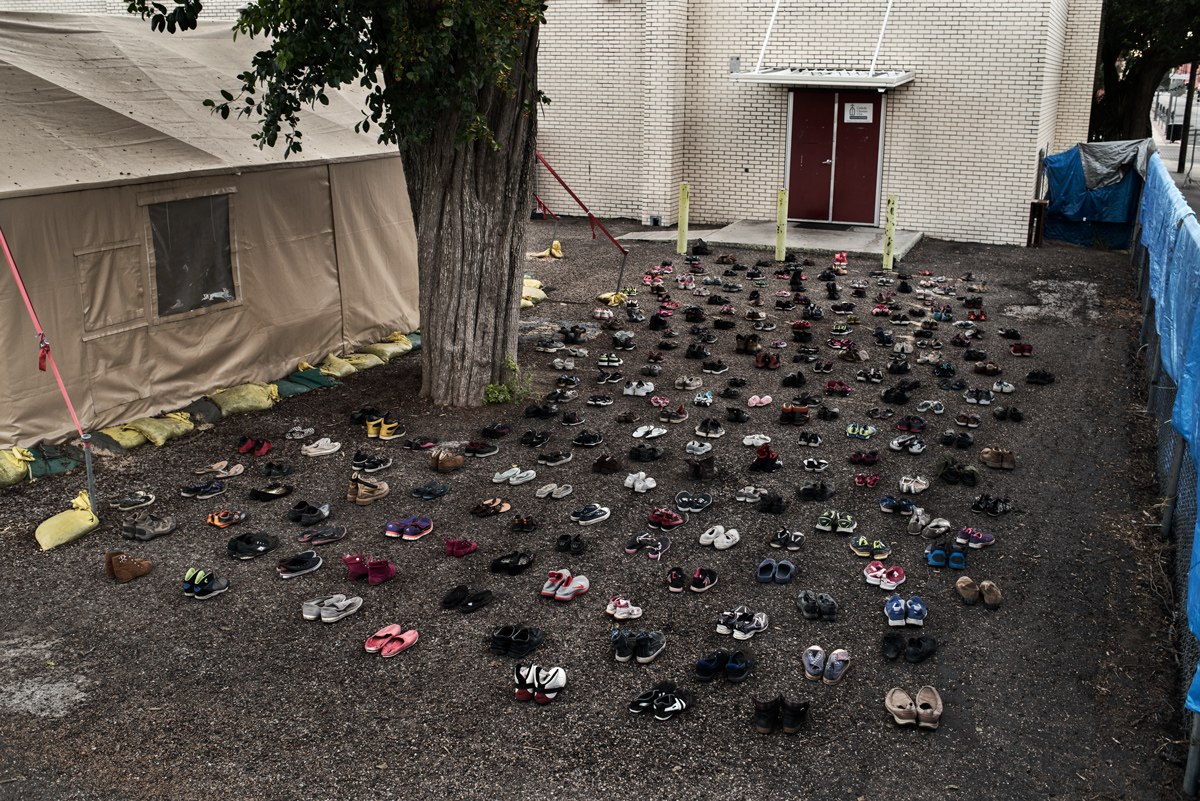
250 soles in front of the Humanitarian Respite Center at Sacred Heart Church in McAllen, TX
By Olka Forster
A few miles across the Texas-Mexico Border is the Sacred Heart Catholic Church, a historical sanctuary in McAllen, Texas. In a single day, hundreds of people crossing the border might be dropped off at the doors of the church after passing through immigration.
The Humanitarian Respite Center (HRC), whose philosophy is to “restore human dignity,” opened at the church three years ago in order to welcome travelers with a place to sleep, eat, and shower. HRC volunteers give the travelers new clothes and shoes, a fresh start for their new beginning.
Photojournalist Verónica Gabriela Cardenas launched her Traveling Soles photojournalism project in the summer of 2014 when the HRC opened. That summer, she photographed 250 pairs of shoes from the HRC in various places around the Rio Grande Valley. At the time, 250 represented the largest number of people that had arrived at the center in a single day. In the weeks after Donald Trump was elected in November 2016, that number grew to 433 in a single day.
Traveling Soles is now taking on a new facet, a performance-art protest called Walk a Mile in Their Soles. Cardenas’ plan is to raise $5,000 to take the 433 pairs of shoes to Washington, D.C. and have 433 volunteers wear them and march in front of the nation’s capitol.
Cardenas spoke with The Sierra Club Lone Star Chapter about the inspiration behind and goals of her project.
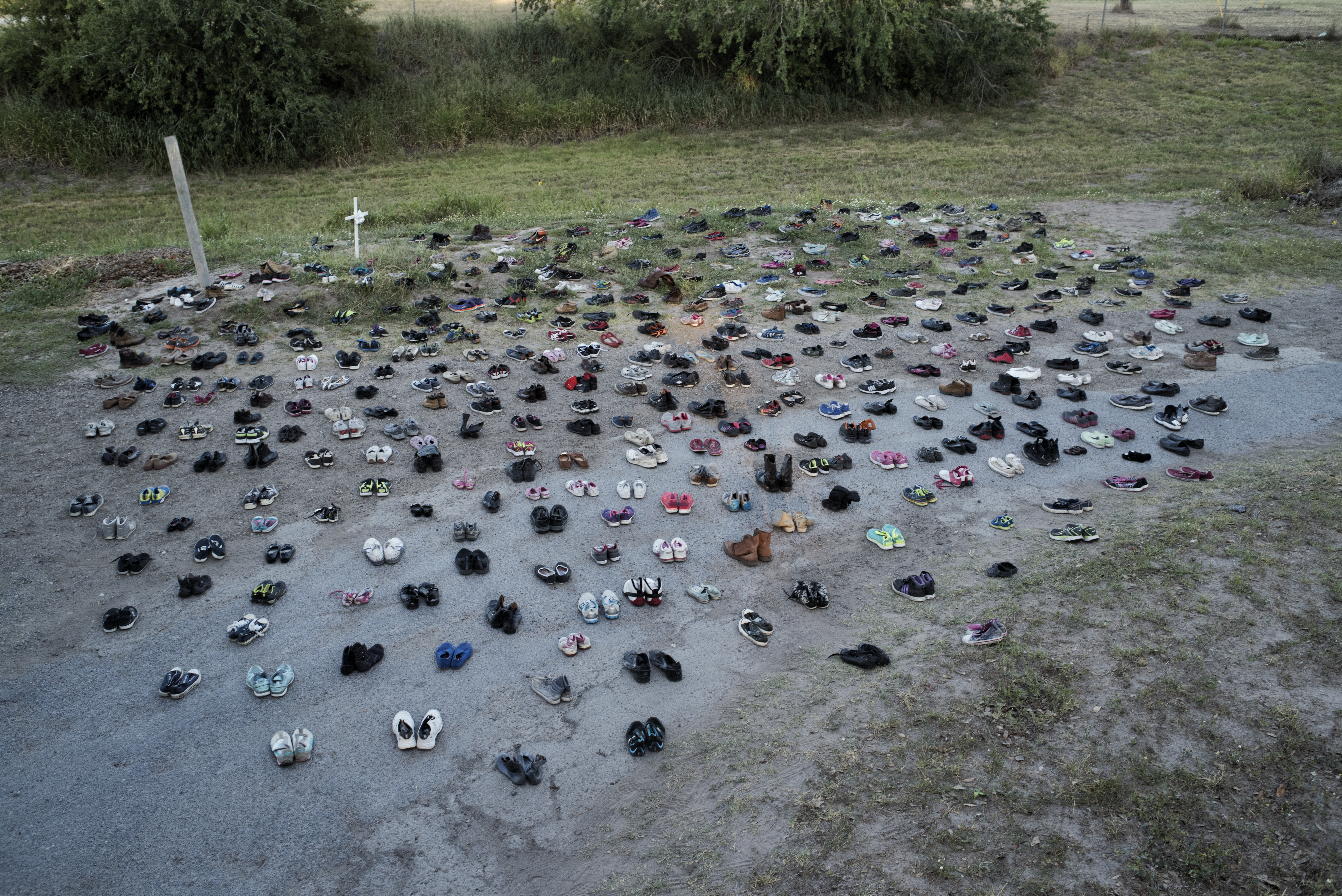
433 Soles visiting the remains of a migrant's unidentified body at the cemetery in Falfurrias, Texas
What made you interested in this issue? Why is this important?
As a Mexican immigrant myself, I felt compelled to give a voice to those stories that struggle to be heard. When politicians talk about immigration, one hears numbers as if that was representative of every single one of us. Through my photography, I aspired to humanize and individualize the migrant experience by sharing just a fragment of their journey.
I believe we should highlight the reasons why they flee their country and the struggles that they endure in order to seek asylum. People do not migrate because they want to but because they are forced to.
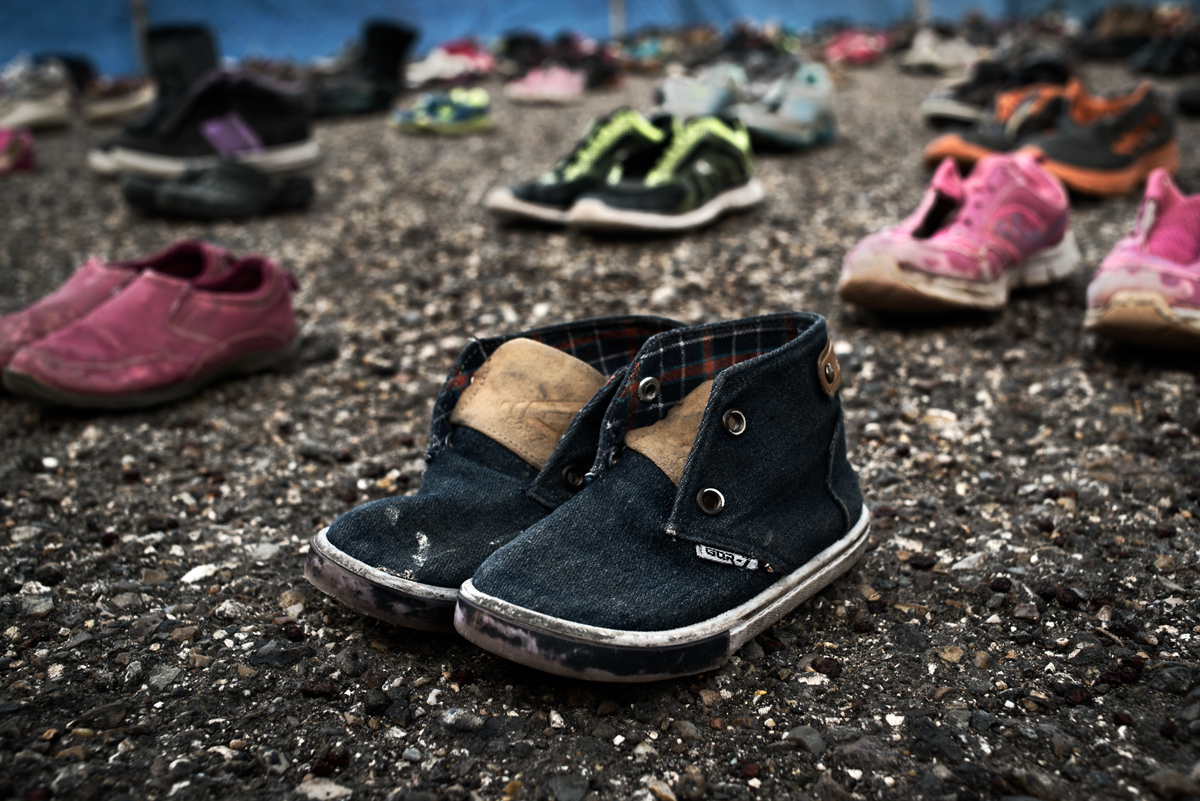
Fernando, Guatemalan, age 4
Fernando and his mother left their country to seek a better life after losing their home and being left by his father. They were able to escape alive after the federales, Mexican police, shot the trailer where they were being transported. He spent his fourth birthday hiding from the Mexican migration agents in the bush lands.
How did you get the idea?
The idea of Traveling Soles came to be during the summer of 2014 when Sister Norma Pimentel, executive director of Catholic Charities in the Rio Grande Valley, opened the Humanitarian Respite Center. At the center I was given permission to photograph the migrant families as long as I did not show their faces. Inevitably, I was drawn to capture their backs, hands and feet.
I was inclined to photograph the feet especially, as I noticed that most of the shoes were missing shoelaces. The shoelaces are removed once they are processed through immigration for safety reasons. I quickly realized that sometimes the migrants would change their shoes for clean ones or new ones and their old shoes were thrown away.
A few months before elections, it occurred to me to take the shoes to D.C. At the time, the idea even seemed bizarre to me and to a couple of friends that I shared it with. So, I forgot about it because it seemed like an unreachable goal to me. But the more and more I thought about it, the more feasible it seemed.
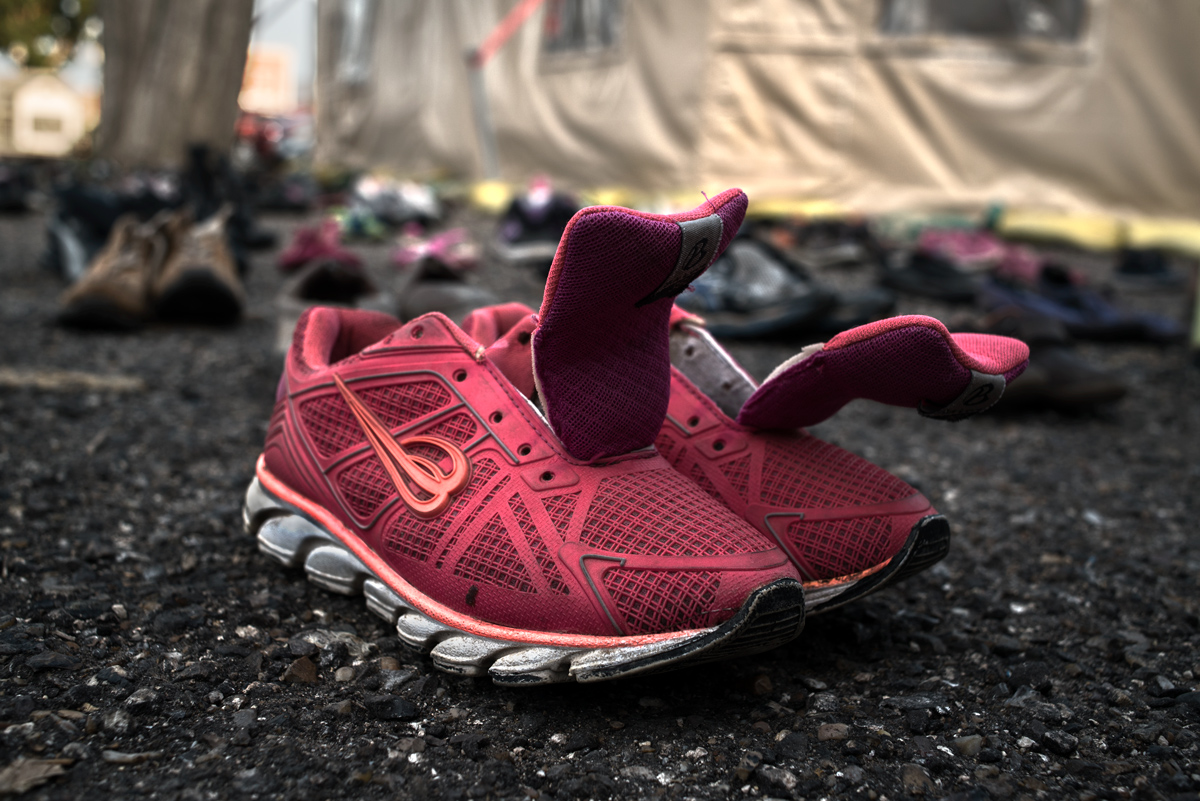
Damaris, Honduran, age 12
Damaris, along with her mother, her pregnant 14-year-old sister, and her two-year-old nephew, fled their country. Her nephew was the product of rape when her sister was only 12 years of age. They fled their country fearing for their lives and boarded La bestia (the beast), the cargo train that many migrants take in order to get to the northern part of México. On the train, Damaris and her family were kidnapped by a Mexican drug cartel and later released after family members paid the ransom.
What is one of the stories of the shoes that you found?
One of the stories that was very heartbreaking was a family that came from El Salvador. The mother’s son had been kidnapped and killed because he refused to join one of the gangs. Fearing for their life, the mother and her kids had to flee their country. While they were traveling through México, they were kidnapped. The kidnappers had begun torturing the mother until her and her kids were able to escape after a month. Unfortunately, this is a recurrent story in México for many migrants fleeing their country.
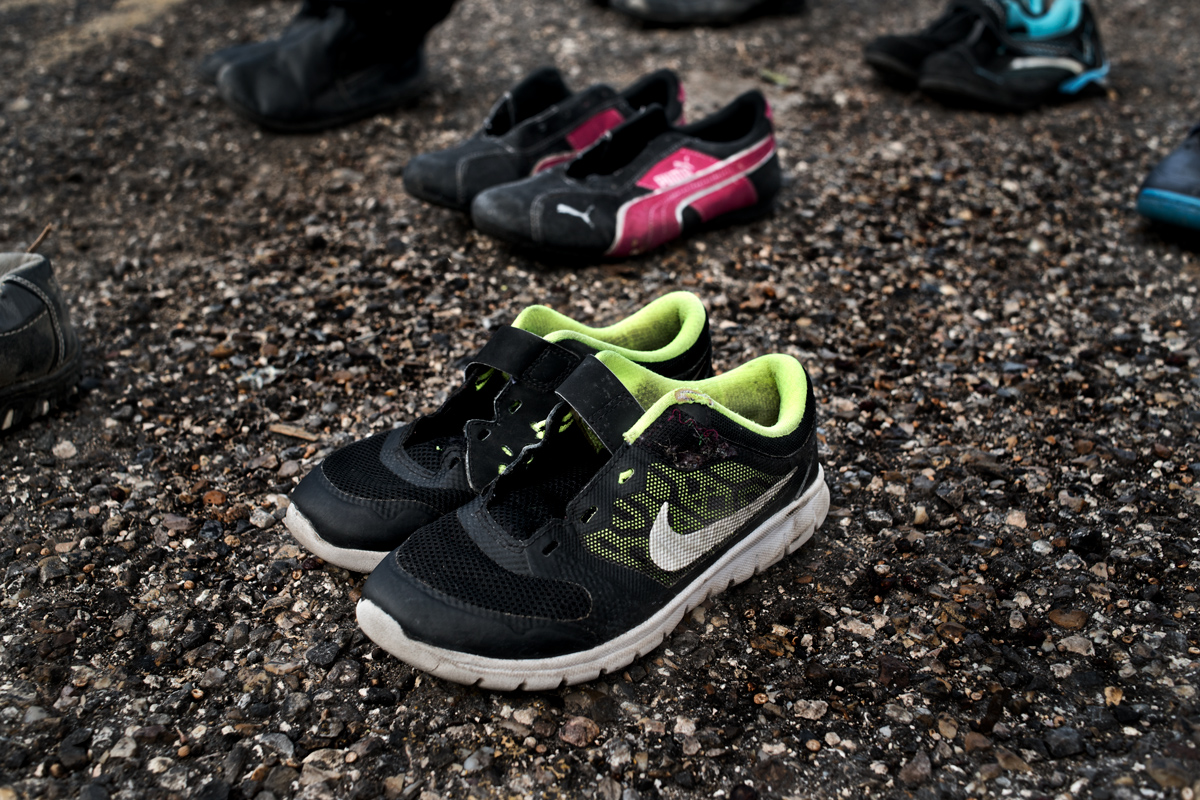
Dacia, Salvadoran, age 7
While Dacia was in the womb, gang members beat her mother. She was born hydrocephalic and with scoliosis. Her older brother was kidnapped and after a year, her mother has accepted the fact that he is dead. While they were traveling to the United States, they were kidnapped by a Mexican drug cartel. It took them a month to finally escape from them but only after cartel members had tortured and peeled off half of the skin from her mother’s foot.
What is your goal with this project, and what are some important details one should know about the performance?
Through Traveling Soles and the extension of it, Walk a Mile in Their Soles, I hope we can raise awareness not only to the current immigration issues in our country but also the issue of immigration on a global scale. In order to do this, I will take the 433 pairs of shoes, which represent the largest number of people that arrived in one day at the center, to Washington, D.C. where 433 volunteers will wear them in a silent march. At the end, they will be facing the White House, they will take off the shoes, put theirs on and walk away, leaving the soles posing for the next photo.
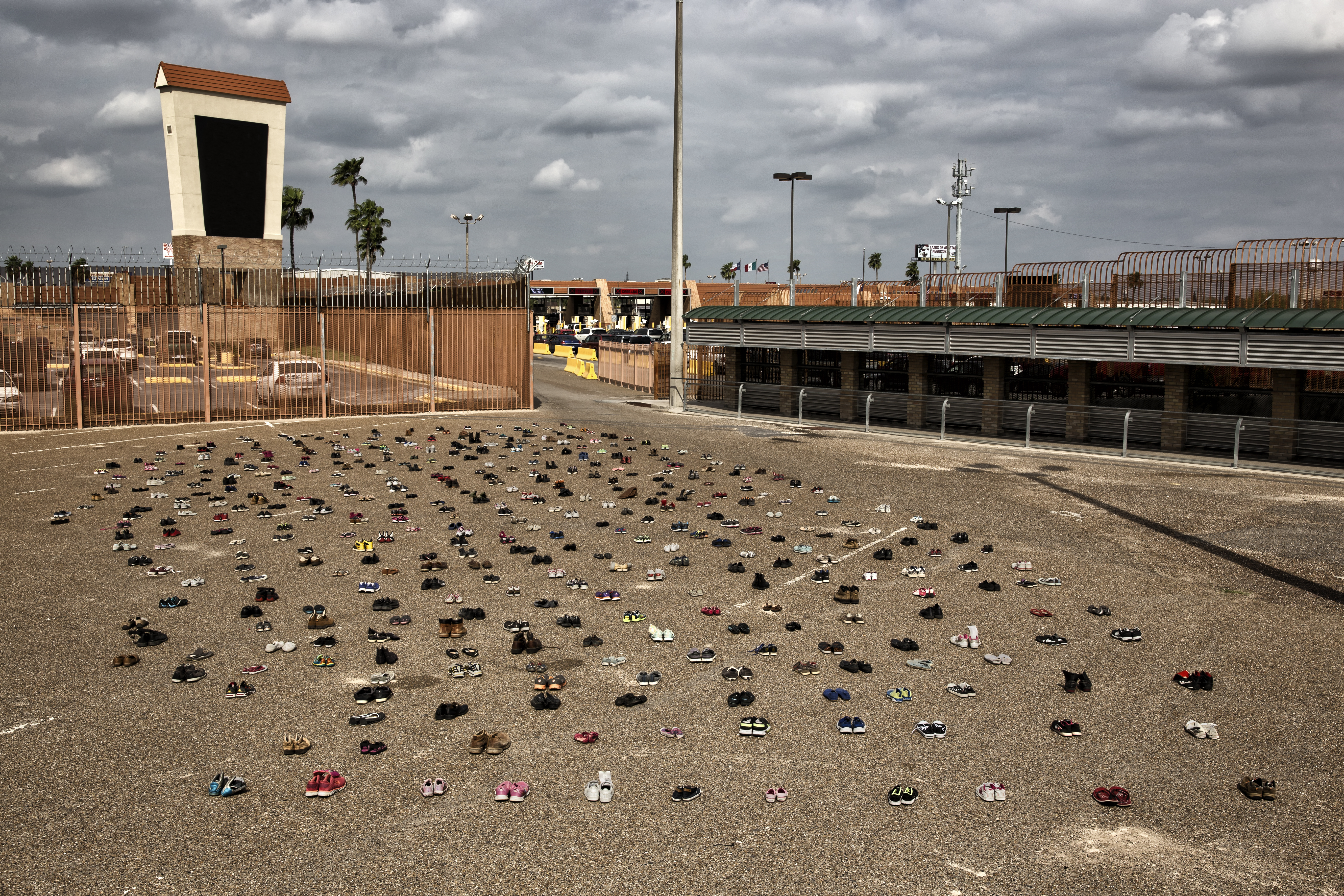
433 soles turning themselves in at the port of entry in Hidalgo, Texas
How do you think this performance gets your message across?
The project promotes solidarity and togetherness in the community. Also, I want all the volunteers to be white, representing the use of their “white privilege” to help others. This project shows that essentially, as human beings, we are equal and by putting ourselves into the shoes of others we can try to understand their struggles and their needs.
I believe that through art, and in this case through performance art, we can bring the world a different angle to the global migration issues. Right now is the moment to be the change one wants to see in the world. We cannot be spectators anymore, we must act, and we must become part of a movement to be reckoned with.

433 soles entering the United States through the Rio Grande River or "El Río Bravo," as known in México
About the Photographer:
Verónica Gabriela Cardenas is a documentary photographer based in the southernmost region of Texas known as the Rio Grande Valley. She obtained a Bachelor’s Degree in Language Arts from the University of Texas Rio Grande Valley. Ever since she was a child, she enjoyed documenting the daily lives of her, her siblings and friends through recordings. Years later, she rediscovered her fascination for documenting, however through a different medium: photography.
Her initial work as a photographer includes nature and street photography. Later she realized she had a deep desire for helping others through her work and that is when she began developing personal projects where she felt more fulfilled. For almost two years she has been working on personal projects related to migration. Vero’s ultimate goal is that she can give others a voice through her work.
To support Walk a Mile in Their Soles and send 433 soles to D.C., please donate to Cardenas’ GoFundMe here: https://www.gofundme.com/2skny-walk-a-mile-in-their-Soles